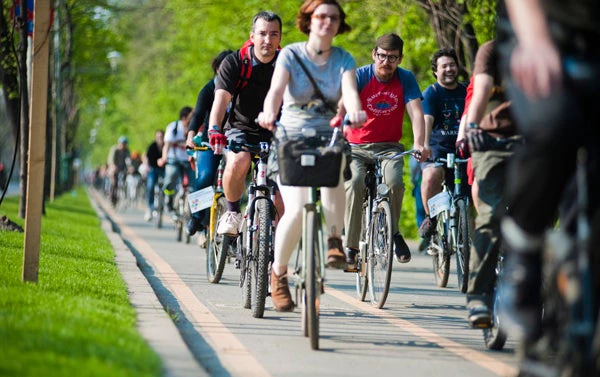Also available in: Russian

Over the past year, people living in Bucharest, the capital of Romania, are seeing more bike lanes and metro stations in their city than before.
There are now about 122 km of cycling paths and four metro lines with 45 stations. It is a welcome sight in a city that suffers from air pollution and where many people tend to use private vehicles. Using bikes and the metro is cleaning up the city and, for some, is a quicker way to get around. And, as its popularity increases, it will likely lead to lower greenhouse gas emissions. Financing for this new development comes in part from the sale of carbon credits to Romanian power companies by the government, a welcome revenue stream for a stretched city budget.
Since 2013, power companies in Romania are required to buy rights to emit carbon dioxide - or European Union Allowances (EUAs), as they are called in the European Emission Trading System (EU ETS). They buy these ‘rights to pollute’ at EU ETS auctions at an ever rising cost since they are required to buy more allowances over time.
The idea is that the more expensive it is for power companies to emit, the more likely they are to become energy efficient and switch to greener technologies. And the revenues from the EUA auctions are used to support a greener environment: the government of Romania spends around 70% of the received income on climate investment projects .
The income from the auctions is quite substantial. In 2013-2014, Romania collected about 260 million Euros and they are hoping to collect considerably more - about 2 billion Euros - during the 2016-2020 period. This is a much-needed source of income to help put the country on a pathway toward a low-carbon and resilient economy.
The World Bank has been helping Romania develop a plan to spend its growing climate funds effectively . Within the Bank’s framework of the Advisory Services Program on Climate Change and Low-Carbon Green Growth, the government looked at best practices across Europe in managing these funds and received advice on how to prioritize investments and improve legal and institutional structures to reduce emissions, create jobs, attract private capital and improve the standard of living of its population.
Today, however, only about 1% of people in Bucharest use bikes and about 16% use the metro. This is substantially lower than other European cities like Stockholm and Amsterdam and presents a clear opportunity for growth in green transportation. It goes hand in hand with other climate-smart investments Romania is preparing in sectors like energy, transport, agriculture, and forestry, including a successful carbon finance project to plant trees on about 6,000 hectares of degraded agricultural lands, which they are now looking to expand.


Join the Conversation